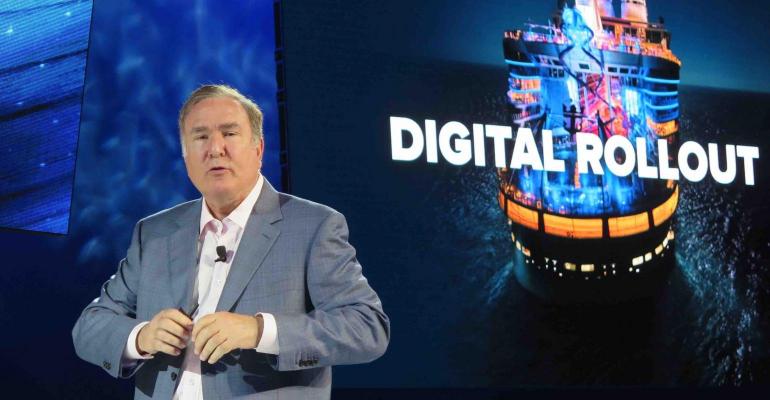The Group's existing mobile app will integrate crucial health practices as it continues to eliminate traditional pain points of travel — lines, crowds and paper.
Recently Royal Caribbean released a reimagined safety drill that was in development for more than a year. Muster 2.0 encourages higher levels of safety and health by reframing a process originally designed for large groups into a faster, more personal approach.
Powerful solution that can integrate new health and safety practices
At the core of Muster 2.0 is the cruise company’s mobile app, first introduced in 2017 and now available on many Royal Caribbean International, Celebrity Cruises and Azamara ships. The app’s capabilities make it a powerful solution, in Royal Caribbean's view, that can integrate new health and safety practices, such as physical distancing and minimizing common touchpoints.
A number of features and capabilities currently within the app — released in different combinations across the cruise company’s 63-ship fleet — are being built on for current times.
Muster 2.0 is the latest example, with more to come.
Royal Caribbean Group said additional advances will be released, including some that will make the greatest impact from behind the scenes. These innovations, the company added, will further demonstrate its commitment to exceeding guest expectations as well as standards for health and safety on a cruise.
Some crowd-reducing features already exist
Existing features include scheduled arrival time for embarkation. By staggering arrival times, it's possible to manage the ebb and flow in parking lots, drop-off areas and terminals to eliminate crowds and enable physical distancing from car to stateroom.
By completing check-in with the app, scanning passport information and uploading a ‘selfie’ security photo, travelers can generate a mobile boarding pass, expediting the boarding process. Debuted in 2018, this minimizes check-in and security lines at ports, allowing travelers to embark in minutes.
Minimizing touch points
Travelers can unlock their staterooms with their smartphones by downloading a digital key, available in just a few taps for select ships and staterooms.
Inside their room and using their smartphone, travelers can control the TV, lighting, window shades and temperature, limiting touchpoints while achieving higher levels of stateroom customization.
Other features include the ability to view on-board charges and credits in real time from anywhere on the ship without waiting in line or on hold and planning activities, with shows, dining and shore excursions viewable and open for booking through the app.
Copyright © 2024. All rights reserved. Seatrade, a trading name of Informa Markets (UK) Limited.
Add Seatrade Cruise News to your Google News feed.  |

